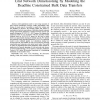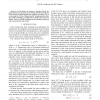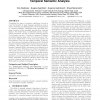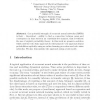5154 search results - page 13 / 1031 » Computing and using residuals in time series models |
TFS
2008
13 years 7 months ago
2008
Abstract--In this paper, we introduce a novel approach to timeseries prediction realized both at the linguistic and numerical level. It exploits fuzzy cognitive maps (FCMs) along w...
HPCC
2009
Springer
14 years 3 days ago
2009
Springer
—Grid applications need to move large amounts of data between distributed resources within deterministic time frames. In most cases it is possible to specify the volume and the d...
CDC
2008
IEEE
14 years 2 months ago
2008
IEEE
— In this paper we present a structure theory for generalized linear dynamic factor models (GDFM’s). Emphasis is laid on the so-called zeroless case. GDFM’s provide a way of ...
WWW
2011
ACM
13 years 2 months ago
2011
ACM
Computing the degree of semantic relatedness of words is a key functionality of many language applications such as search, clustering, and disambiguation. Previous approaches to c...
ICA
2010
Springer
13 years 6 months ago
2010
Springer
One potential strength of recurrent neural networks (RNNs) is their – theoretical – ability to find a connection between cause and consequence in time series in an constraint-...




